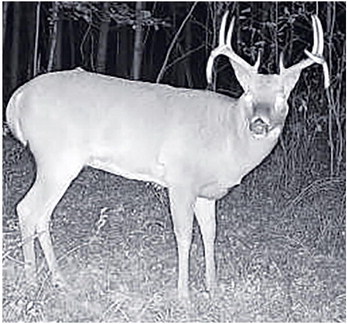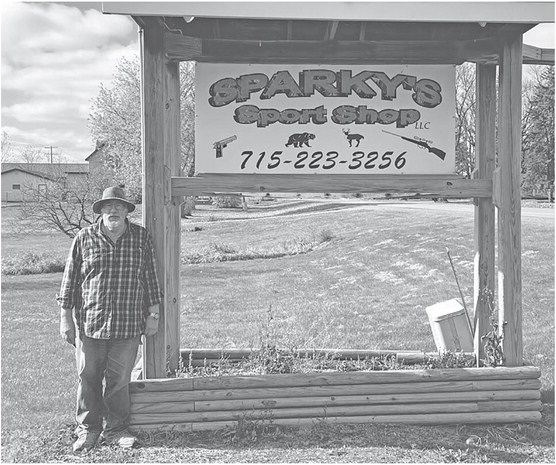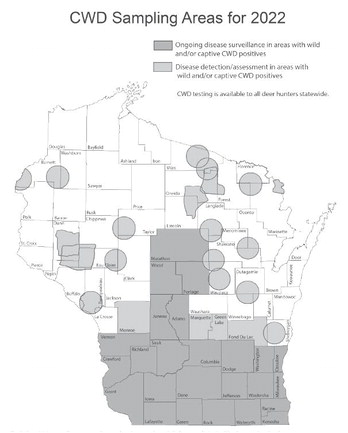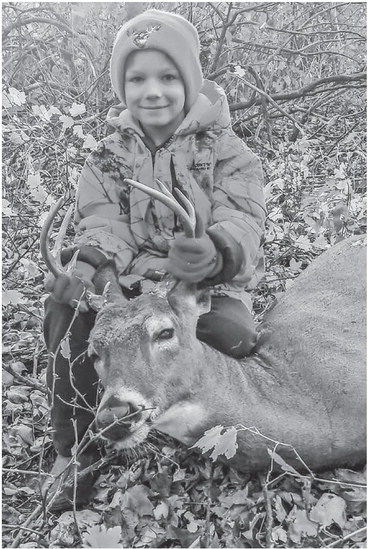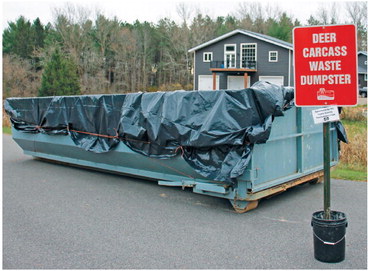Gun deer season outlook
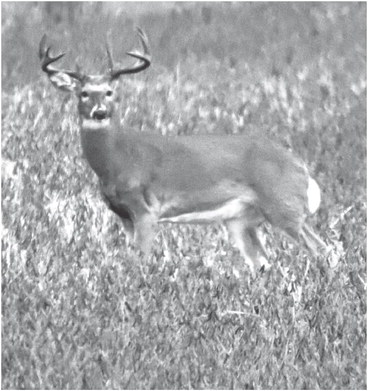

Herd in good shape heading into 2022 hunt, scouting your area, as always, is key
BY MATT FREY
THE STAR NEWS
Another nine-day gun deer hunting season is rapidly approaching in Wisconsin and with it comes dreams of bagging the big one, or bagging that first one and just the anticipation of once again taking part in a traditional gathering with friends and family and getting away from the real world.
Many state hunters have already added venison to the freezer or placed orders at their taxidermists this fall following successful bow or youth hunts. Next week, the focus turns to the firearms hunt, set for Nov. 19-27. How deer populations sit and how high or low to set expectations for 2022 will depend on where you hunt.
The fall of 2022 so far has been a warm one, much like 2021, but through early November, harvest numbers appear to be a little higher this year than they were at this point last year from a statewide perspective. Harvests in 2021 were generally down from 2020 statewide with no standout reason as to why other than possibly being a snapback year after record hunter participation in 2020.
“If anything, what we saw in 2020 was a spike in participation and with it came a bit of a bump in harvest,” said Jeff Pritzl, the DNR’s deer program specialist, in a Nov. 3 briefing with statewide media. “Then last year, there was a bit of a correction factor and I think we saw a drop, especially in antlerless harvest in 2021 that was a little out of the norm and a little concerning to find out if that was a trend or not. This year that antlerless harvest has returned from an archery standpoint to normal or even a little bit above average.”
“I think we’ve got a pretty strong deer herd again,” said Emma Doden, the DNR’s wildlife biologist for Taylor and Rusk counties in an Oct. 25 interview. “We’ve had a pretty good growing season this year. In my short time here talking with other folks it seems like there was a lot of food on the landscape later in the summer and into the fall. We had a big cherry bumper crop this year, saw a lot of acorns on the ground and hazelnuts. That’ll help the deer fatten up going into the winter and put on some good antler growth for the bucks and also help with fawn survival.”
Locally in the four-county area of Taylor, Clark, Chippewa and Marathon counties, the statewide uptick wasn’t fully reflected in the Nov. 1 harvest update posted by the Department of Natural Resources. While harvest rates are up in Taylor County, they were lagging a little behind 2021 in the other three counties. But with the rut hitting its peak in the first week of November, buck harvests, in particular, were expected to spike.
“What’s happened over the past couple of decades, and I think it’s a reflection of enthusiasm for deer hunting, is that a lot of hunters have said I like deer hunting to the point where I want to do more than just that nine days,” Pritzl said. “The archery and now the crossbow seasons provide months of opportunity. So we’ve seen more and more people opting to participate as an archer, whether it be with a bow or a crossbow, as well as during the gun season to the point now where literally half of our total deer hunting population are archers as well as firearm hunters.”
With the Nov. 19 start date being the third earliest potential gun season start dates under Wisconsin’s season structure, opening weekend is creeping closer toward catching the tail end of the breeding season, when bucks might be on the move yet a little more than normal. Of course, opening weekend weather is always a key factor in how successful harvests are in each deer management unit.
“Agricultural harvest right now is pretty much on track with the norms as well, which is good news,” Pritzl said. “Most of the standing corn should be off in the farmland come opening weekend. That’s good news for the farmland deer hunters. It takes away a little of that extra hiding cover and sanctuary where deer like to hang out.”
In many areas of the state, including the four-county Central Wisconsin News coverage area, ample antlerless harvest authorizations remain available on private lands.
“In general, in most of our farmland zone counties in the agricultural sections, they do struggle to achieve an antlerless harvest that can keep up with the productivity of the herd,” Pritzl said. “Unfortunately for many hunters, deer are unevenly distributed on the landscape, so that means not every hunter has equal access and opportunity to the resource. Even in those areas where we are promoting additional antlerless harvest, we’ll find hunters that find themselves in a situation where, ‘I would if I could’ because they haven’t had the opportunity and aren’t getting that opportunity in terms of interacting with the deer.
“On the other hand we have hunters that are finding themselves in position where they have plenty of access, but usually what they run up against is this is how many deer we want and we can utilize with our family and our group,” Pritzl added. “When they get to that point, and it can only be with a deer or two, the incentive to continue to take more deer really drops off.”
Here is a forecast synopsis for the four-county Central Wisconsin News coverage area.
Taylor County
The 2022 hunt seems to be off to a good start in Taylor County which isn’t a surprise to Doden.
“Compared to the five-year average we’re on par,” she said. “A lot of folks also like to compare with last year and we are up quite significantly from where we were at this point last year. We’re up probably 20% from our harvest last year. That’s always variable with the weather and hunter success. Last year was a really warm year going into fall so I’m sure that played a pretty big role. That’s usually why we try to look more at those longer term five-year averages.”
Through Nov. 1, crossbow and archery hunters in the county were ahead of 2021’s pace with 583 filled crossbow tags, including 312 bucks, and 263 archery tags filled, 116 of which were bucks and a significantly higher number of 147 does arrowed.
“We’re sitting good especially compared to last year,” Doden said. “It seems like a lot of deer are starting to move around now. I would say the peak of the rut would be around that first week of November for Taylor County. Seeing more and more rubs and scrapes out in the woods.”
The western part of Taylor County remains in a chronic wasting disease surveillance area following CWD game-
See OUTLOOK on page 5 Outlook
Continued from page 5
farm detections just outside of Gilman. The county has seven self-sampling kiosks available for those who want to test their deer before consuming them. As a reminder, baiting and feeding is still banned in the county through at least the 2023 hunting seasons.
“We have 28 samples submitted so far this year,” Doden said. “Last year I think our total was at 150 samples for all the deer seasons. This year we’re hoping to even get a little higher number. Usually our guidance is within a 10-mile radius of where the CWD positive was detected. That’s kind of our focus area. Ideally we want to try to get 150 samples within just that 10-mile radius. We’re encouraging folks to get their deer tested just to ensure that we don’t have CWD in the wild population.”
The other push is for safe disposal of deer carcasses. Three dumpsters for that purpose were made available to the public in late October. They are at the Medford DNR Ranger Station, the Rib Lake Cenex Station and the Gilman Corner Store.
The county remains under an increase population objective with the focus to increase being placed on the county’s sizable public land tracts. On private land, there is more of a maintain focus. There were 10,000 private-land antlerless harvest authorizations made available by the county’s deer advisory council for the second straight fall and, as of Nov. 3, more than 4,400 were still available.
“In Taylor County the past couple of years those private-land tags haven’t sold out,” Doden said. “I think that’s a sign that we’re meeting the demand for it. As far as that being a concern, it kind of depends on how the population continues to trend in the next couple of years and keeping track of whether that population continues to increase or if it looks like things are starting to level off. Just keeping track of whether the deer herd is at a healthy state and if we’re able to manage it with the number of tags that are sold versus available.”
Doden encouraged Taylor County hunters to be involved in the deer management process by following the actions of the County Deer Advisory Council and filling out the DNR’s Deer Hunter Wildlife Survey (https://dnr.wisconsin.gov/ topic/WildlifeHabitat/wlsurvey.html).
“I would also remind folks to register your deer,” Doden said. “That’s one of the biggest things hunters can do to help contribute to deer management in Wisconsin. It gives us a lot of information just from registering your deer.”
Marathon County
For the fourth hunting season in a row, those serving on the County Deer Advisory Council in Marathon County set an antlerless harvest quota of 7,000 deer for this fall and are urging hunters to be willing to harvest some of those deer in order to meet the county’s “maintain” three-year objective.
Marathon County is a Central Farmland Zone. As in recent seasons, one free farmland authorization went to every license buyer who wanted one this fall in Marathon County, which is how the vast majority of antlerless permits are issued in the county. Last year 35,718 such tags were issued with 12% of them (4,296) being filled.
Just like the past two years, an additional 2,000 private-land tags were made available for purchase. As of Nov. 3, 284 of them were still available. Last year, just 385 of them were filled. The county did offer bonus public-land authorizations this year for the first time, issuing 200 of them. Those tags are sold out. Does can also be shot on public lands using the farmland tags. The county features about 50,000 acres of accessible land, with the nine units of the Marathon County Forest, the McMillan Marsh Wildlife Area and the Mead Wildlife Area being the largest public properties.
Marathon County’s DNR wildlife biologist Brandon Stefanski called the antlerless quota of 7,000 acceptable but also felt it probably isn’t attainable, which could be a problem as population estimates show a growing trend. While some pushed for a second farmland antlerless authorization for each license buyer, the CDAC ultimately decided to keep the number at one for another year.
A holiday hunt also was rejected as a possibility for harvesting more antlerless deer due to concerns about conflicts with snowmobiling season.
In 2021, county hunters registered an overall total of 10,767 deer, which was down 7.2% from 2020’s disappointing total of 11,607. The total included 5,314 antlerless deer, well short of the 7,000 quota and a 15% decrease from 2020. There were slight increases, however, in Marathon County with buck harvests from 2020 to 2021, with the nine-day gun buck kill going up 3.6% to 3,341 animals.
The vast majority of deer in the county are taken on private lands, including 9,660 of them last fall.
The CDAC’s efforts to split the state’s largest county into two deer management units have hit roadblocks at the DNR level. The council had proposed to establish a new unit in the southeastern part of the county this year.
Through Nov. 1, DNR statistics showed crossbow hunters registering 579 bucks and 581 does, down from 670 and 478 at this point last year, while archery hunters had tagged 268 bucks and 333 does, compared to 359 bucks and 279 does a year ago.
Clark County
In another of the state’s largest counties, Clark County, the perception during the spring quota-setting process was that deer numbers are on the rise, especially in the farmland areas of the county. That is shown in higher antlerless permits being made available.
The county, like several others, may be reaching the point where the demand for antlerless authorizations won’t meet the supply.
Being a large county, Clark County does have diversity in land types, meaning some areas will hold more deer than others.
The county is divided into two deer management zones. Most of the land is in the Central Farmland zone, which is operated by the Clark County Deer Advisory Council under a maintain population objective. Roughly the southern third is in the Central Forest Zone, including the 135,000-acre Clark County Forest. This land is under an increase population objective.
In the spring, the county’s Deer Advisory Council set quota and antlerless authorization levels that are again aimed at the aggressive harvest it views as needed to follow the maintain objective in the Farmland Zone. The quota, which was increased from 4,000 in 2020 to 5,700 in 2021 remains at 5,700 this fall and hunters were offered two farmland zone tags per license purchased for the second straight fall. Plus 2,050 bonus tags were put up for sale to private-landers. As of Nov. 3, 1,333 of those tags were still available.
The total harvest in the Central Farmland Zone of Clark County was virtually identical in 2021 to the previous year, coming up just two deer shy of 2020 at 7,768 deer. The Farmland Zone’s nine-day gun season total harvest also was nearly unchanged, going up 11 deer to 5,400. The buck harvest during the nine-day hunt dropped 5.8% percent to 1,984 deer but the increase in tags did result in a 3.8% increase in the antlerless kill at 3,416. Similarly, the crossbow and archery harvests in 2021 were very similar to 2020.
The antlerless quota in the Central Forest Zone of Clark County is staying put as well. It was raised slightly from 500 to 700 last year and is there again in 2022. Antlerless permit numbers stayed the same as well with 700 issued for public land and 2,000 issued for private land. The public tags are sold out. A limited supply of 188 private tags remained as of Nov. 3.
The Central Forest’s 2021 harvest totals dipped slightly after an upward nudge in 2020. The total harvest was down 4.2% to 1,816 deer. The buck harvest for the fall was the same as 2020 at 1,128 deer, but the antlerless count, despite an uptick in tags, went down 10.5% to 688. Like the farmland, crossbow and archery harvests in Clark County in 2021 were amazingly similar to those of 2020.
Last fall, with two tags per license, 31,200 farmland tags were issued for private lands with a success rate of just 11.2% (3,488 filled). The success rate was 19.4% in 2020, but the percentage drop is expected when tag availability shoots up. Success rates were even lower on public land farmland tags with only 5.8% of 9,192 tags being filled (532 deer). Antlerless authorization holders in the Central Forest Zone are more likely to use them. Last year’s overall success rate on purchased bonus tags was 20.8%. A total of 556 antlerless deer registered in the zone, 126 on public land and 430 on private land.
Through Nov. 1, according to DNR statistics, hunters had registered 809 deer by crossbow and 413 deer by archery in the Farmland Zone of Clark County and an additional 173 deer by crossbow and 72 deer by archery in the Central Forest Zone.
Those figures are down slightly compared to last year at this time.
Chippewa County
Deer populations remain stable in much of Chippewa County, where the county’s Deer Advisory Council set numbers this spring aimed at maintaining the herd’s population levels in both the Central Farmland and Northern Forest zones of the county.
The one area they’d like to see an even greater harvest effort is the Metro Unit that surrounds Chippewa Falls and includes Lake Wissota State Park.
In the Farmland Zone, which encompasses roughly the southern two-thirds of Chippewa County, the council kept the 2022 antlerless harvest quota the same as 2021 at 5,000 deer and again offered one free farmland tag per license bought by hunters. There is a slight decrease in private-land bonus antlerless authorizations at 3,200, down 300 from last year. But public-land tags doubled to 600. As of Nov. 3, 2,365 of the private-land and 414 of the public-land tags were still available.
The Central Farmland portion of the county experienced a solid harvest in 2021, but it probably didn’t quite meet some people’s expectations with the overall harvest dropping 7.6% from the previous year to 4,684 deer. Of that total, 4,309 were taken on private lands and just under half, 2,156, were antlered bucks.
Crossbow harvests and archery harvests dipped slightly overall, but the antlerless harvests dipped by fairly significant amounts during the bow season when compared to 2020. The crossbow harvest of 409 does was down 28.1% and the vertical bow harvest of 227 does was down 31%. Vertical bow harvest drops in general aren’t surprising as more hunters move to crossbows.
So far, harvests have been similar in 2022 in the farmland areas to what they were in 2021. As of Nov. 1, 497 deer had been taken by crossbow hunters, including 272 bucks and 225 antlerless deer. Archers had nabbed 280 more, including 166 antlerless deer, up from 131 at this point last fall.
In the Northern Forest Zone, which generally covers land north and east of Hwys 64 and 53, the antlerless quota is up by 100 to 1,100 deer this year. There were 500 public-land doe tags made available and those are long gone. As of Nov. 3, 2,696 of the 3,900 private-land tags were still available.
A total of 1,492 deer were harvested overall in the forest zone in 2021, up 5.5% from 2020’s total of 1,414. The antlerless kill was similar to 2020 going up eight deer to 644 while 848 of the total harvested deer were antlered bucks.
Through Nov. 1, crossbow hunters had taken 135 deer in the zone –– down 15 from the same checkpoint in 2021 –– including 73 bucks, and archers had harvested 65 deer, with 35 of them being bucks. Those numbers lag behind last year.
There were 15,039 farmland tags issued last year in Chippewa County and 1,705 of them were filled (11.3%). Private land users were far more successful than private land users (12.6% to 5.7%). There were an additional 1,870 bonus authorizations sold and more hunters got their money’s worth out of those with a 19.5% success rate.
While bonus tags were obviously not as plentiful in the Forest Zone, 24.6% (548) of the 2,232 issued tags were filled. The Northern Forest split in Chippewa County was first used in 2018 to better manage the herd on this more wooded part of the county.
In the Metro Unit, 900 public land antlerless permits were made available and plenty of those (880) were still available as of Nov. 3. Also, 86 of the 100 publicland tags that were put out for sale are still available. Two metro unit tags per license are available as well for those who want them.

WISCONSIN DNR GRAPHIC

Ample antlerless harvest authorizations remain available for private lands in Taylor, Chippewa, Clark and Marathon counties heading into the gun deer season.MATT FREY/THE STAR NEWS
